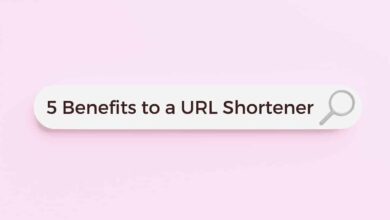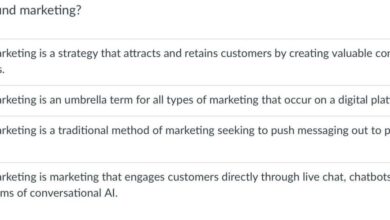
How to Use Think with Google A Deep Dive
How to use Think with Google? This guide provides a comprehensive exploration of this invaluable resource for businesses looking to leverage Google’s insights. We’ll cover everything from understanding its purpose and target audience to practical application, tools, and staying updated on the latest trends. Whether you’re a seasoned marketer or just starting out, this resource will equip you with the knowledge and strategies to maximize your results.
Think with Google offers a treasure trove of information, meticulously crafted articles, insightful case studies, and interactive webinars. It’s more than just data; it’s a powerful platform for understanding customer behavior, developing effective strategies, and ultimately, boosting your business’s performance. We’ll dissect the different approaches to presenting data and insights, and provide actionable steps to implement those insights in your own campaigns.
Introduction to Think with Google
Think with Google is a valuable resource for businesses seeking to understand and leverage the latest trends in digital marketing. It’s a hub for insights, tools, and resources designed to help companies optimize their online strategies and achieve their business goals. Its target audience encompasses entrepreneurs, marketing professionals, and business leaders who are passionate about navigating the ever-evolving digital landscape.Think with Google’s mission is to empower businesses with the knowledge and resources they need to thrive in the digital age.
This platform offers a wealth of practical information, allowing users to gain a competitive edge and improve their understanding of consumer behavior and market trends.
Key Benefits of Think with Google
Think with Google provides numerous benefits to its users. Access to actionable insights empowers companies to refine their marketing strategies and achieve greater success. The platform offers a deep dive into current market trends and consumer behavior, giving businesses a competitive edge. The high-quality content, including articles, case studies, and webinars, empowers users to develop effective digital strategies.
Content Types Available on Think with Google
Think with Google offers a diverse range of content formats to cater to different learning styles and needs. The platform hosts a library of articles covering various topics related to digital marketing, providing in-depth analysis and actionable strategies. These articles delve into current trends, consumer behavior, and effective marketing techniques. Case studies showcase real-world examples of successful campaigns, providing practical demonstrations of strategies that can be applied to different business contexts.
Interactive webinars provide opportunities for expert-led discussions and Q&A sessions, allowing participants to engage directly with industry professionals.
Comparison of Think with Google and Similar Resources
| Feature | Think with Google | HubSpot | Neil Patel’s Blog |
|---|---|---|---|
| Focus | Data-driven insights, digital marketing strategies, and consumer behavior. | In-depth marketing strategies, sales tools, and business growth. | , content marketing, and online growth strategies. |
| Target Audience | Businesses of all sizes, with a focus on understanding the digital landscape. | Businesses and entrepreneurs looking for tools to optimize their business processes. | Entrepreneurs, marketers, and business owners seeking to increase their online presence and organic traffic. |
| Content Type | Articles, case studies, webinars, and infographics. | Blog posts, articles, guides, and templates. | Blog posts, articles, and guides, with a focus on practical strategies. |
| Data Driven | High reliance on data and consumer insights to provide evidence-based recommendations. | Data is often incorporated into strategies, but less heavily emphasized than in Think with Google. | Often based on practical experience and tested strategies, less directly data-driven than Think with Google. |
Discovering Insights & Strategies
Think with Google offers a treasure trove of data and analysis, empowering businesses to understand consumer behavior and market trends. It delves deep into digital marketing strategies, providing actionable insights to improve campaigns and achieve better results. This isn’t just about numbers; it’s about understanding the
Learning how to use Think with Google is a great starting point for boosting your online presence. It provides valuable insights into consumer behavior and market trends, but you need the right strategies to translate those insights into effective campaigns. Finding the best B2B SEM company, like this one , can help you craft targeted ads that resonate with your ideal clients.
Ultimately, using Think with Google effectively requires a blend of data analysis and expert guidance to truly optimize your marketing efforts.
why* behind the data, enabling businesses to tailor their approaches and connect more effectively with their target audiences.
Think with Google employs a multifaceted approach to presenting insights, ranging from in-depth reports and case studies to interactive tools and presentations. This allows businesses to not only see the data, but toexperience* it, fostering a deeper understanding of the nuances of digital marketing. They prioritize clear and concise communication, ensuring that even complex concepts are accessible to a wide range of businesses.
Key Themes and Topics
Think with Google covers a broad spectrum of topics, encompassing everything from consumer trends and e-commerce insights to search behavior and mobile marketing strategies. Their analysis delves into emerging technologies, exploring how they are shaping the digital landscape and impacting customer interactions. Understanding these trends is critical for businesses to remain competitive and adaptable in the ever-evolving digital market.
Learning how to use Think with Google is crucial for any marketer. It’s packed with insights and tools, but it’s all about understanding the data. For example, checking out the recent Ignite Marketer of the Week, Lara Hood Balazs, CMO & GM at Intuit , shows how data-driven decisions are transforming the marketing landscape. Ultimately, the key is to use Think with Google’s resources effectively to optimize your strategies and stay ahead of the curve.
Different Approaches to Presenting Data and Insights
Think with Google utilizes a variety of formats to present data and insights. Interactive dashboards, for example, allow businesses to explore data visualizations and uncover trends. Case studies demonstrate how successful businesses have applied Think with Google’s strategies, offering practical examples and actionable takeaways. Furthermore, detailed reports provide in-depth analyses of market trends and consumer behaviors, offering a comprehensive view of the digital landscape.
Infographics effectively communicate complex data points in an easily digestible format, while articles offer insightful commentary on industry trends and best practices.
How Think with Google Helps Businesses Understand Their Customers Better
Think with Google’s research and analysis provide a holistic view of consumer behavior. By examining search patterns, website interactions, and purchase histories, businesses gain a deeper understanding of their target audience’s needs and preferences. This understanding enables businesses to personalize their marketing messages and tailor their products and services to resonate more effectively with their customers. The result is a stronger customer relationship built on a foundation of trust and understanding.
Think with Google Resources by Industry/Business Goal
Think with Google provides resources categorized by industry and business goals, making it easier for businesses to find the information they need. This targeted approach ensures businesses can access the most relevant insights for their specific industry and objectives.
- E-commerce: Resources cover topics such as optimizing online stores, improving conversion rates, and leveraging social commerce strategies.
- Retail: Insights address challenges in brick-and-mortar stores, including integrating online and offline experiences, and enhancing customer engagement strategies.
- Marketing Agencies: Think with Google provides actionable insights to help agencies develop effective marketing strategies for their clients.
- Small Businesses: Resources focus on using digital marketing to improve visibility and reach, while keeping costs low.
- Brand Building: Resources address strategies for building brand awareness and trust in the digital age.
Advantages of Think with Google vs. Other Digital Marketing Platforms
Think with Google provides a unique blend of data analysis and strategic insights. Unlike many other platforms that focus solely on data collection, Think with Google offers a broader perspective, connecting the dots between consumer behavior, market trends, and effective marketing strategies. The platform’s comprehensive approach offers more than just metrics; it delivers actionable strategies for achieving specific business goals.
Practical Application & Implementation
Think with Google provides a wealth of actionable insights for businesses seeking to navigate the ever-evolving digital landscape. This section dives into practical application, demonstrating how to leverage Think with Google’s resources to address specific business challenges, gain inspiration from case studies, and translate data into actionable strategies. We’ll explore the process of interpreting data visualizations, ensuring you can extract meaningful conclusions and implement effective solutions.Successfully applying the knowledge gained from Think with Google requires a structured approach.
It’s not just about absorbing information; it’s about translating insights into tangible improvements for your business. This section will guide you through that process.
Using Case Studies for Inspiration
Case studies are invaluable resources for learning from successful implementations of digital strategies. Think with Google features numerous case studies showcasing how different companies have addressed specific business challenges using data-driven insights. These real-world examples offer invaluable lessons, allowing you to adapt proven strategies to your unique business context.To effectively utilize case studies, first identify the specific business challenge you are facing.
Then, search Think with Google’s case study library, filtering by industry or relevant s. Analyze the case study’s methodology, including the data sources, tools, and strategies employed. Identify key takeaways and consider how those strategies could be adapted to your business. Note the successes and any potential pitfalls encountered. Don’t just read the case study; actively engage with it, extracting actionable steps for your business.
Actionable Takeaways from Think with Google Articles
Think with Google offers a comprehensive collection of articles, providing insights into current trends, best practices, and innovative approaches to digital marketing. These articles provide a wealth of actionable takeaways, empowering you to adapt and implement strategies that resonate with your target audience.
- Improved Customer Segmentation: By segmenting customers based on behavior, demographics, and preferences, companies can tailor their marketing messages and products to specific needs, leading to higher conversion rates and customer satisfaction. This approach personalizes the customer journey.
- Data-Driven Content Strategy: Understanding audience interests and search behavior is crucial. By creating content aligned with these insights, businesses can enhance rankings, attract more qualified leads, and improve overall website engagement.
- Enhanced Mobile Optimization: Ensuring a seamless mobile experience is vital. Optimize websites and marketing campaigns for mobile devices to improve user experience, reduce bounce rates, and boost conversion rates.
- Leveraging Voice Search: The rise of voice search necessitates a shift in content creation and strategies. Companies need to adapt to voice search queries to remain competitive.
Interpreting Data Visualizations
Think with Google reports often include data visualizations, such as charts and graphs, to illustrate key insights. These visualizations present complex data in an easily digestible format, allowing for quick comprehension of trends and patterns.Understanding how to interpret these visualizations is crucial for deriving meaningful conclusions and implementing effective strategies. Look for key trends, patterns, and outliers in the data.
Consider the context of the data and the specific insights being presented. Focus on the overall message and implications for your business.
| Visualization Type | Interpretation Focus |
|---|---|
| Bar Charts | Comparing different categories or groups of data; identifying significant differences or similarities. |
| Line Graphs | Showing trends over time; identifying growth, decline, or seasonal patterns. |
| Pie Charts | Representing proportions or percentages within a whole; highlighting the relative importance of different components. |
Successful implementation of Think with Google’s strategies requires careful analysis of these visualizations. Look for trends, patterns, and outliers that can inform strategic decisions. Understanding the context behind the data is crucial for drawing accurate conclusions.
Tools & Resources

Think with Google provides a wealth of tools and resources designed to empower businesses with data-driven insights. These resources extend beyond basic analytics, offering in-depth explorations of consumer behavior, market trends, and effective marketing strategies. Leveraging these tools effectively allows businesses to optimize campaigns, tailor messages, and ultimately achieve better results.Understanding the variety of tools and their specific applications is key to maximizing their value.
Think with Google isn’t just a repository of data; it’s a dynamic platform for discovering actionable strategies. Each tool offers a unique perspective, and using them strategically is critical for success.
Available Tools and Resources
Think with Google offers a diverse array of resources, ranging from interactive dashboards to detailed reports and case studies. These resources cover a broad spectrum of marketing disciplines, allowing businesses to tailor their approach to their specific needs. This includes data visualization tools, trend analysis resources, and practical guides on implementing effective strategies.
- Data Visualization Tools: Think with Google provides a collection of data visualization tools, enabling businesses to represent complex data in a clear and understandable format. These tools include interactive dashboards, charts, and graphs. These tools are essential for quickly identifying trends and patterns within data, allowing for informed decision-making. For example, a company can visualize website traffic data across different devices to understand which platforms are driving the most engagement.
- Trend Analysis Resources: Think with Google compiles and analyzes industry trends and consumer insights. These resources offer detailed reports on market dynamics, consumer behavior, and emerging technologies. For example, a report on mobile commerce trends can help businesses understand the shift towards mobile shopping and adapt their strategies accordingly.
- Case Studies and Best Practices: Think with Google showcases real-world examples of successful marketing campaigns. These case studies offer practical insights into effective strategies, tactics, and technologies. For instance, a case study on a successful social media campaign can provide actionable ideas for similar campaigns.
- Templates and Guides: Think with Google offers templates and guides on topics such as creating compelling ad copy, optimizing landing pages, and conducting market research. These resources provide a framework for businesses to develop and implement their strategies, ensuring a structured approach. A guide on email marketing best practices, for example, can help companies craft more effective campaigns.
Using Think with Google Tools
A structured approach to using Think with Google’s resources is crucial for maximizing their impact. Begin by defining specific marketing objectives. Next, identify the relevant tools and resources that align with these objectives. Finally, utilize these resources to generate actionable insights and implement effective strategies.
- Define Objectives: Clearly articulate the marketing goals you want to achieve. This clarity will guide your resource selection and analysis.
- Identify Relevant Tools: Select the tools and resources that directly address your defined objectives. For instance, if you want to understand mobile user behavior, use the tools focused on mobile data.
- Analyze and Implement: Use the insights gleaned from the tools to create and refine your marketing strategies. Implement the necessary changes and track the results.
Data Visualization Tools
Think with Google provides a variety of data visualization tools, allowing businesses to interpret data effectively. This includes different chart types, dashboards, and interactive reports. These tools are essential for understanding and communicating marketing performance and trends.
| Type of Visualization | Description | Example Use Case |
|---|---|---|
| Interactive Dashboards | Visual representations of key metrics in real-time. | Tracking website traffic, ad performance, and sales data. |
| Bar Charts | Compare values across different categories. | Visualizing website traffic by device type. |
| Line Charts | Show trends over time. | Analyzing the growth of social media engagement over months. |
| Pie Charts | Represent proportions of a whole. | Displaying the breakdown of website traffic sources. |
| Scatter Plots | Illustrate the relationship between two variables. | Examining the correlation between ad spend and conversion rates. |
Staying Updated

Keeping your finger on the pulse of digital marketing trends is crucial for success. Think with Google provides a wealth of valuable insights, strategies, and tools to help you stay ahead of the curve. This section dives into the various methods for accessing and utilizing these resources effectively.Staying updated on the latest digital marketing insights from Think with Google is essential for staying competitive in today’s dynamic market.
Their resources are a goldmine of actionable knowledge, and understanding how to access and utilize them effectively is key.
Methods for Staying Updated
Think with Google offers a variety of methods to ensure you’re informed about the latest trends and insights. Leveraging these resources allows you to continuously learn and adapt your strategies to maximize their effectiveness.
- Regularly visiting the Think with Google website: The Think with Google website is a central hub for their latest publications. Exploring the blog, case studies, and reports is an excellent way to stay informed. Regular visits ensure you don’t miss any significant updates.
- Subscribing to Think with Google’s newsletters: Newsletters deliver curated content directly to your inbox, keeping you informed about new releases and important updates. This targeted approach allows you to focus on the information that resonates most with your interests.
- Following Think with Google on social media: Social media platforms provide timely updates and announcements. Following their accounts allows you to engage with discussions and stay informed about relevant news and events.
Best Practices for Following Updates, How to use think with google
Implementing effective strategies for following Think with Google’s updates is vital for ensuring you’re always up-to-date on the latest trends. These practices streamline the process, making it easier to access valuable information and stay informed.
- Setting up email alerts: Activating email alerts for specific topics or authors allows you to receive notifications as soon as new content is published. This is a highly effective way to stay ahead of the curve.
- Bookmarking key pages: Saving essential pages or sections on the Think with Google website will enable you to return to these resources quickly and easily. This structured approach enhances your ability to quickly access and review the information you need.
- Creating a dedicated workspace for research: Designating a specific area for saving and reviewing Think with Google content enhances organization and enables easy access to pertinent information when needed. This will maximize the potential of the insights.
Frequency and Types of Updates
Think with Google provides a diverse range of updates, keeping you informed about various aspects of digital marketing. The variety of formats and publication frequency allows you to adapt to your learning style and preferences.
- Frequency of Updates: Think with Google publishes new content regularly, providing fresh insights and updates on a consistent basis. This constant stream of information allows you to adapt to the rapidly changing digital landscape.
- Types of Updates: The platform delivers a variety of content types, including blog posts, articles, reports, case studies, infographics, and videos. This comprehensive approach addresses different learning styles and preferences.
Formats of Think with Google Updates
The diverse formats of Think with Google updates cater to various learning styles and preferences. This approach allows you to consume information in the way that suits you best.
- Blog posts: Blog posts offer in-depth analyses of current trends and strategies, often providing actionable takeaways. These posts are a great way to stay informed about the latest developments.
- Newsletters: Newsletters deliver curated summaries of recent insights, offering a quick overview of key updates. This concise format is ideal for staying current with trends.
- Case studies: Case studies provide real-world examples of successful marketing campaigns, demonstrating how strategies have been implemented and their impact. These examples offer a practical understanding of the discussed concepts.
- Reports: Reports delve into detailed data and analysis of specific markets, demographics, and trends. These comprehensive resources provide in-depth knowledge for strategic decision-making.
Subscribing to Relevant Resources
Subscribing to the right resources from Think with Google allows you to tailor your learning experience to your specific needs. This targeted approach ensures that you’re exposed to the most relevant information for your business goals.
- Identifying Relevant Topics: Identify the areas of digital marketing that are most relevant to your business. This targeted approach ensures that you’re receiving information that directly impacts your objectives.
- Choosing the Right Formats: Select the content formats that align with your preferred learning style. Whether you prefer blog posts, reports, or videos, Think with Google provides a variety of options.
- Utilizing Email Subscriptions: Utilize email subscriptions to receive notifications for new content related to your chosen topics. This approach streamlines the process of staying informed.
Example Case Studies: How To Use Think With Google
Think with Google’s case studies offer valuable insights into how businesses have leveraged digital strategies to achieve remarkable results. These examples showcase the power of data-driven decision-making and the potential for significant growth when adopting the right approach. Analyzing these case studies can help businesses identify best practices and tailor strategies for their own unique needs.
Figuring out how to use Think with Google is a great way to dive into understanding your audience better. It’s all about leveraging data to improve your website’s user experience, and that starts with grasping what user experience actually is. Understanding what is user experience is key to interpreting the insights Think with Google provides. Ultimately, this knowledge helps you craft better strategies for your business using the tools available within Think with Google.
A Successful Case Study: E-commerce Growth Through Personalized Recommendations
This Think with Google case study details how a leading online retailer significantly boosted sales by implementing a personalized recommendation engine. The company recognized the limitations of traditional, generic recommendations and the need for a more targeted approach to enhance customer engagement.
Challenges Faced
- Low conversion rates on product pages.
- Difficulty in understanding customer preferences beyond basic demographics.
- High bounce rate on product listings due to irrelevant product suggestions.
- Existing recommendation system wasn’t tailored to individual customer needs.
Solutions Implemented
- Data-driven approach: The company analyzed customer browsing history, purchase behavior, and demographics to create detailed customer profiles.
- AI-powered personalization: They implemented a machine learning algorithm to generate highly personalized product recommendations based on individual customer preferences.
- A/B testing: The effectiveness of different recommendation algorithms was tested to identify the optimal approach for different customer segments.
- Improved website design: Product pages were redesigned to seamlessly integrate the personalized recommendations, making the browsing experience more engaging and relevant.
Results Achieved
- Increased conversion rates: The personalized recommendations resulted in a 25% increase in conversion rates on product pages.
- Higher average order value: Customers were more likely to purchase additional items recommended to them, leading to a 15% rise in average order value.
- Reduced bounce rate: Relevance of product suggestions improved, resulting in a 10% decrease in bounce rate.
- Enhanced customer satisfaction: Customers felt a more tailored and engaging experience, leading to higher customer satisfaction scores.
Key Lessons Learned
| Lesson | Insight |
|---|---|
| Data-driven personalization is crucial for e-commerce success. | Understanding customer behavior through data analysis is paramount to tailor product recommendations effectively. |
| AI-powered recommendation systems can significantly improve conversion rates. | Utilizing machine learning algorithms can deliver highly personalized recommendations, driving significant growth. |
| A/B testing is essential for optimizing recommendation strategies. | Experimentation is key to identifying the most effective approaches for different customer segments. |
| Website design should seamlessly integrate personalized recommendations. | A user-friendly experience with relevant product suggestions is vital for a positive customer journey. |
Illustrative Examples of Data Visualization
Think with Google provides a wealth of data and insights into consumer behavior, market trends, and digital marketing strategies. Effectively communicating these findings is crucial for understanding and applying them. Data visualization plays a vital role in this process, transforming complex data sets into easily digestible and insightful visuals. This section explores how Think with Google utilizes various visualization techniques to highlight key trends and actionable strategies.
Data Visualization Methods for Understanding Consumer Behavior
Data visualization is crucial for interpreting consumer behavior patterns. Different types of visualizations are used to showcase different aspects of this data. Understanding the data behind these visualizations is essential for deriving meaningful insights and strategies.
- Line Charts: Line charts are excellent for displaying trends over time. Think with Google might use a line chart to show the growth of mobile searches for a specific product category over the past year. The x-axis would represent time (e.g., months), and the y-axis would represent the volume of searches. This visualization allows for easy identification of growth, decline, or seasonal patterns.
A key insight would be the spike in search volume during the holiday season, indicating increased consumer interest.
- Bar Charts: Bar charts are useful for comparing different categories or segments. For example, a bar chart could compare the percentage of online purchases made by different demographics (e.g., age groups, location). This would reveal which segments are driving the majority of online sales, facilitating targeted marketing strategies.
- Pie Charts: Pie charts are effective for displaying proportions or percentages of different categories within a whole. Think with Google might use a pie chart to illustrate the distribution of online traffic sources, such as organic search, paid search, or social media. A pie chart shows the relative importance of each traffic source, allowing businesses to optimize their marketing strategies accordingly.
- Maps: Geographic visualizations, like maps, are valuable for demonstrating regional variations in consumer behavior. For instance, a map could display the geographic distribution of searches for a particular product, highlighting areas with high interest. This allows for localized marketing efforts and tailored product offerings.
Comparing Data Visualization Methods
Understanding the strengths and weaknesses of different visualization methods is critical for choosing the most appropriate tool for a given task. This table compares and contrasts various methods, highlighting their use cases.
| Visualization Method | Description | Strengths | Weaknesses | Use Case Example |
|---|---|---|---|---|
| Line Chart | Displays trends over time | Excellent for identifying trends, patterns, and seasonality | Less effective for comparing categories directly | Tracking monthly website traffic |
| Bar Chart | Compares different categories | Easy to compare values across categories | Not ideal for showing trends over time | Comparing sales figures across different product lines |
| Pie Chart | Shows proportions of different categories | Clearly visualizes the relative size of each category | Difficult to use for large datasets; can be misleading if categories are not clearly defined | Showing market share of different brands |
| Map | Illustrates geographic distribution | Highlights regional variations and concentrations | May not be suitable for very precise comparisons | Identifying regions with high interest in a particular product |
Interpreting Data Visualizations
Interpreting data visualizations involves more than just identifying patterns. It requires considering the context, the data source, and the limitations of the visualization itself. Carefully evaluating these factors ensures accurate interpretation.
- Context: Understand the background of the data and the purpose of the visualization. Contextual information helps to understand the motivations and actions behind the data.
- Data Source: Consider the reliability and representativeness of the data source. Biased or incomplete data can lead to misleading interpretations.
- Visualization Method: Recognize the strengths and weaknesses of the chosen visualization method. A bar chart might not be the best way to show trends over time, while a map might not be appropriate for comparing specific data points.
Wrap-Up
In conclusion, mastering Think with Google empowers businesses to gain a deeper understanding of their customers, refine their strategies, and achieve tangible results. This resource provides a wealth of knowledge, practical tools, and real-world examples to help you make the most of Google’s data-driven insights. By staying informed about the latest trends and utilizing the available resources effectively, you’ll be well-positioned to navigate the ever-evolving digital landscape with confidence and success.





